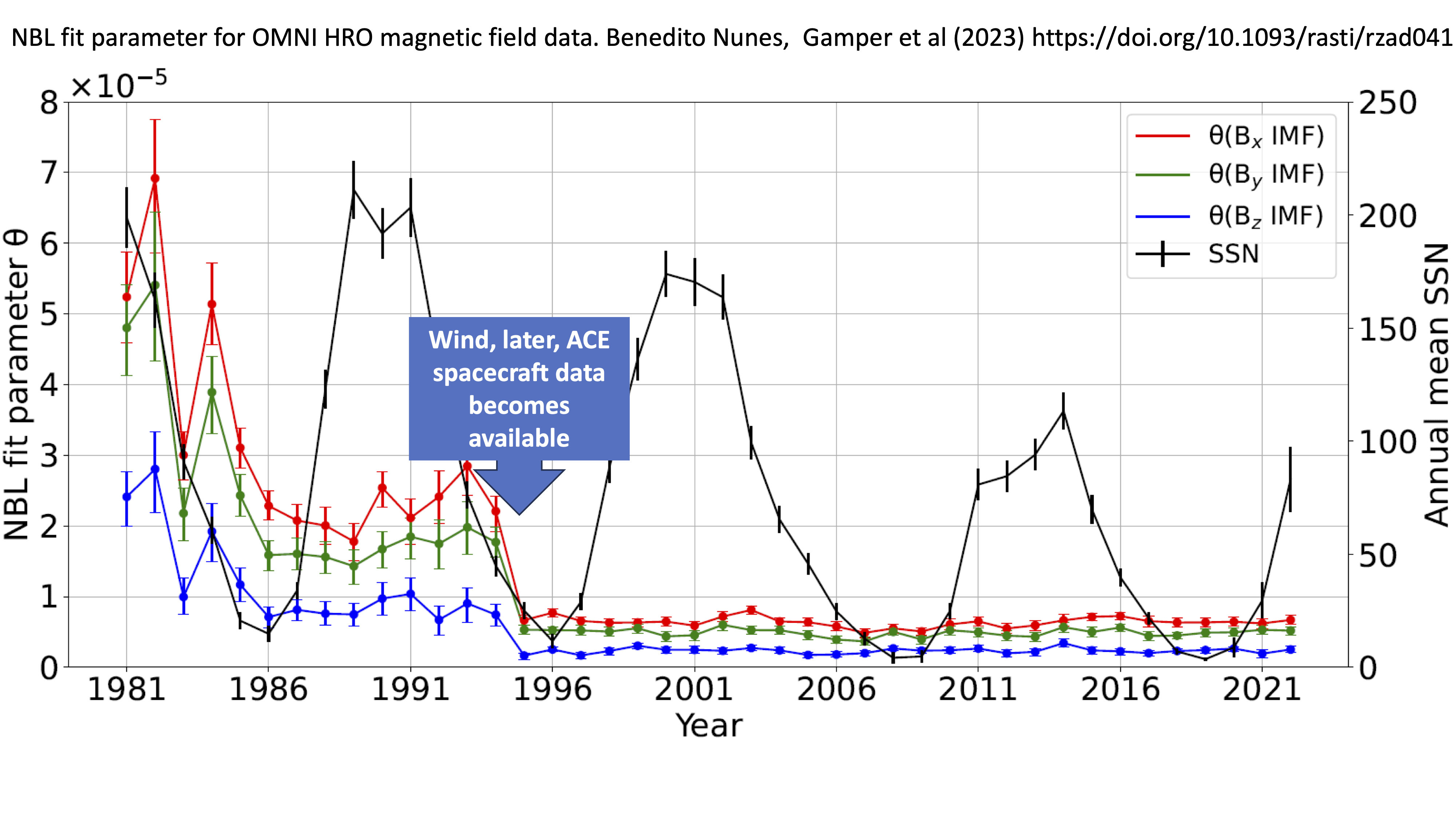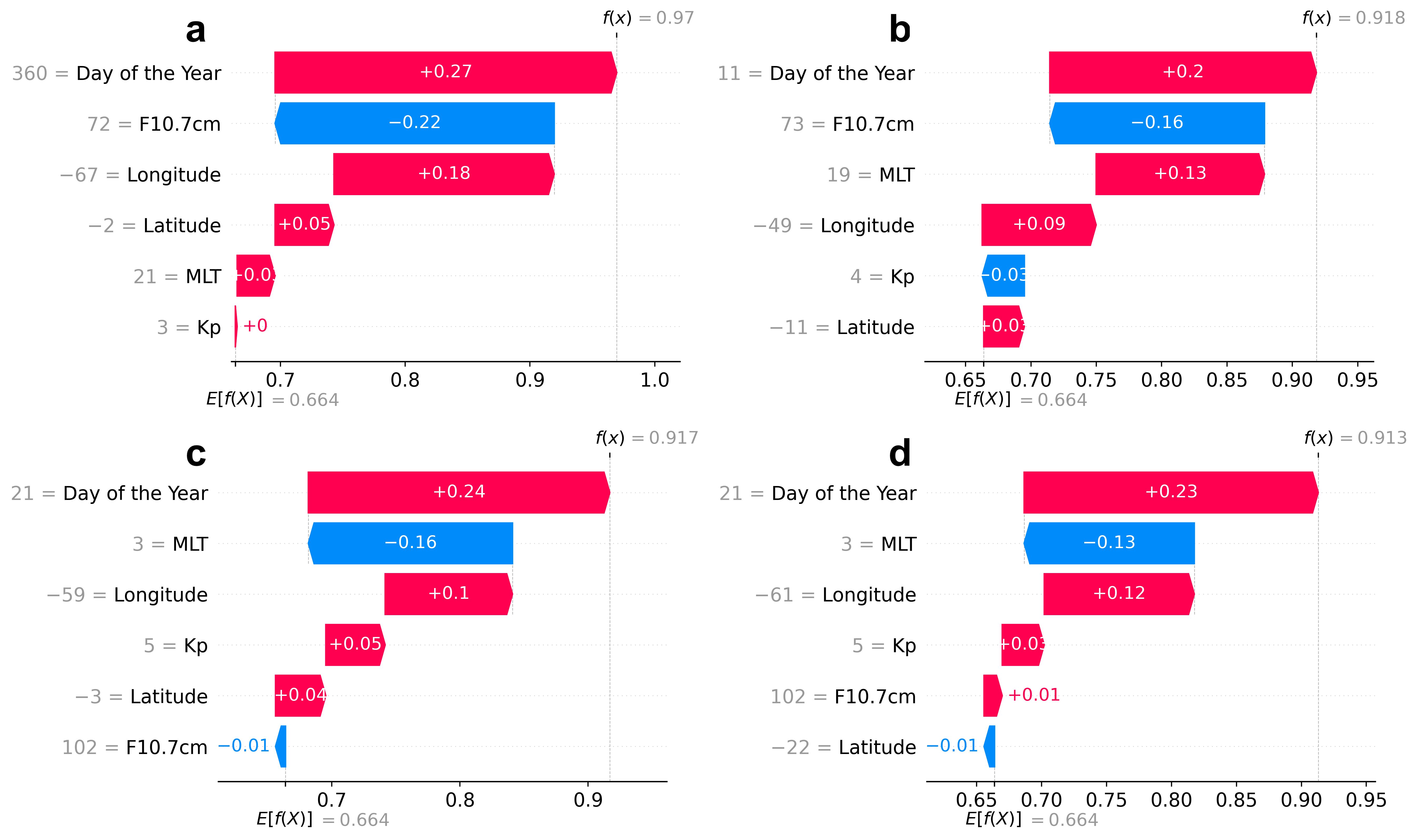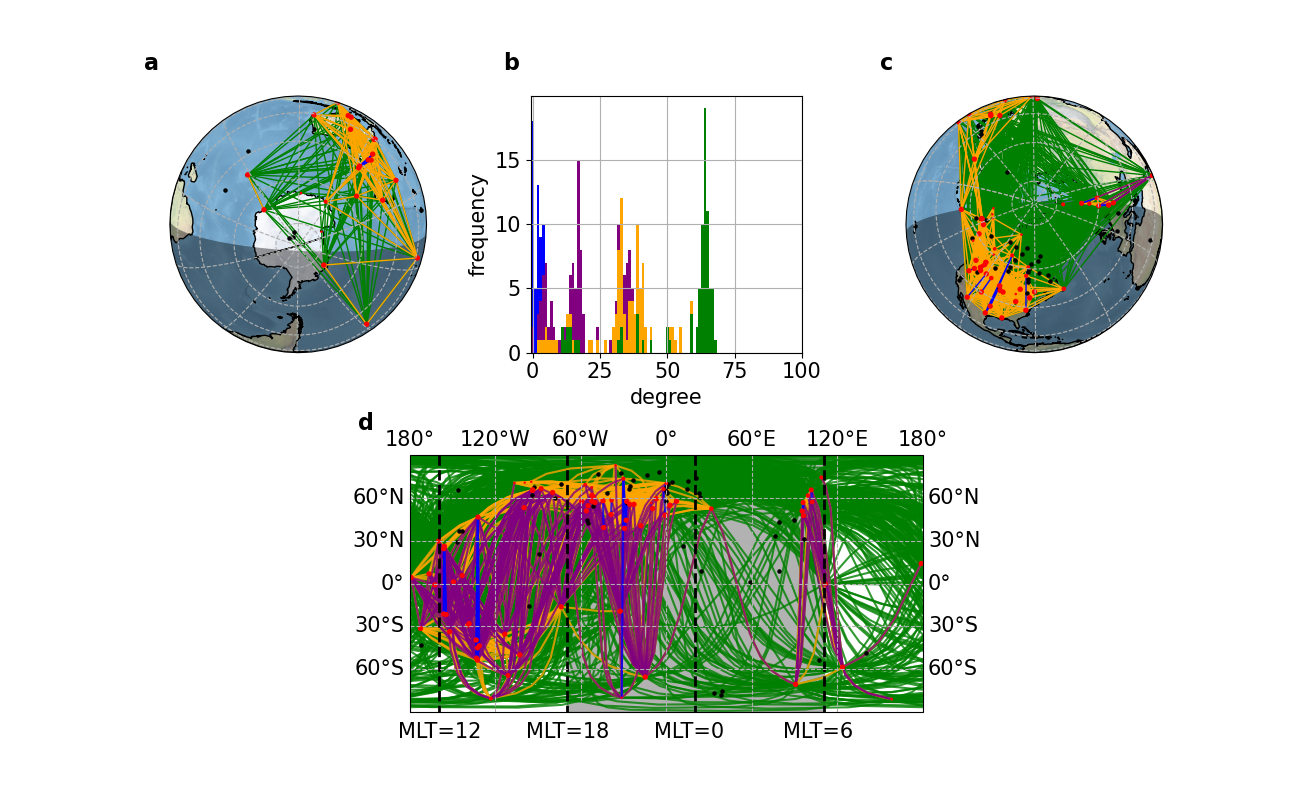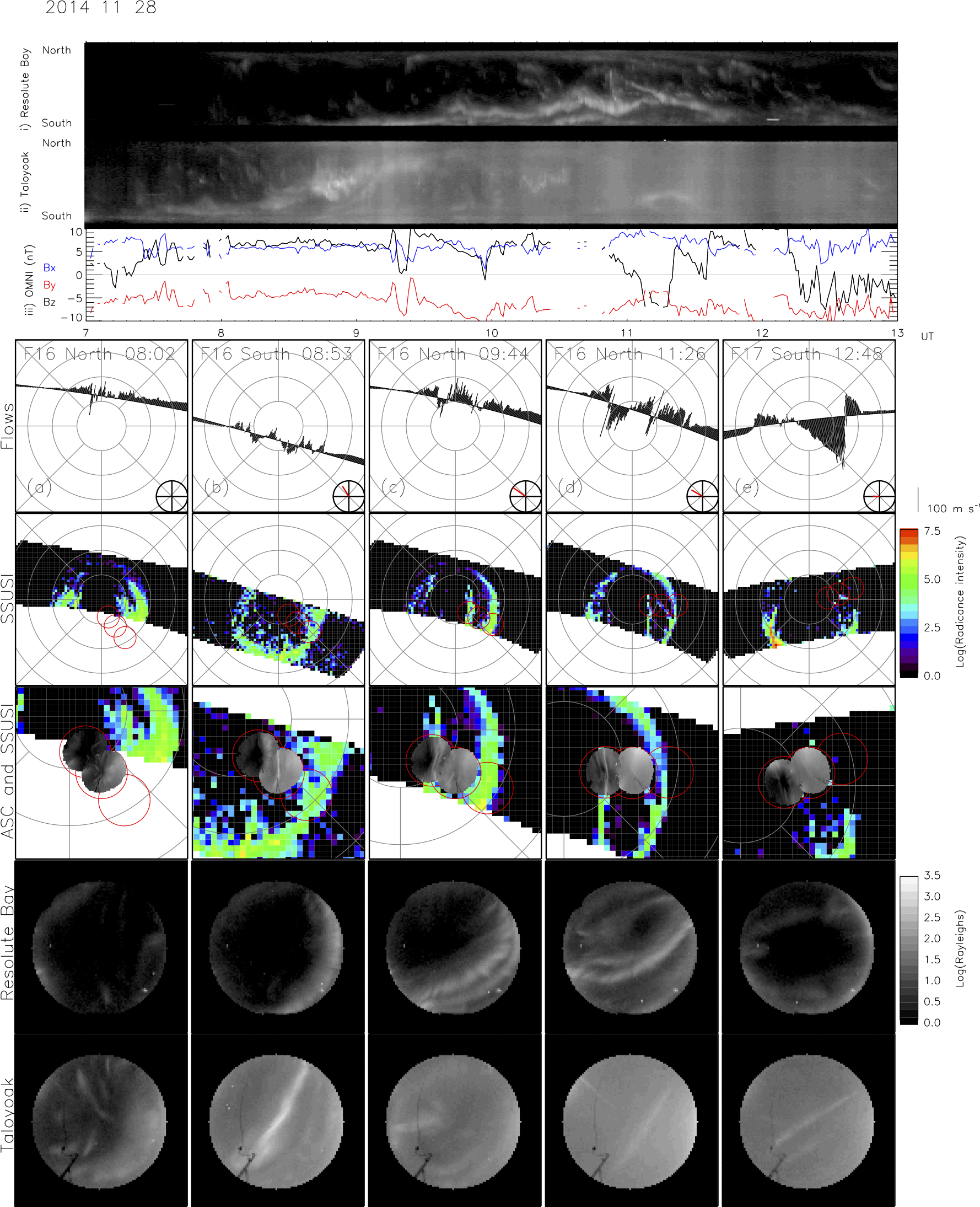MIST
Magnetosphere, Ionosphere and Solar-Terrestrial
Nuggets of MIST science, summarising recent papers from the UK MIST community in a bitesize format.
If you would like to submit a nugget, please fill in the following form: https://forms.gle/Pn3mL73kHLn4VEZ66 and we will arrange a slot for you in the schedule. Nuggets should be 100–300 words long and include a figure/animation. Please get in touch!
If you have any issues with the form, please contact This email address is being protected from spambots. You need JavaScript enabled to view it..
Newcomb-Benford Law as a generic flag for changes in the derivation of long-term solar terrestrial physics timeseries
By Sandra Chapman (University of Warwick), A. M. Bendito Nunes (undergraduate student, University of Warwick), and J. Gamper (undergraduate student, University of Warwick)
Space weather can have significant impact over a wide range of technological systems including power grids, aviation, satellites and communications. In common with studies across the geophysical sciences, space weather modelling and prediction requires long term space and ground-based parameters and indices that necessarily aggregate multiple observations, the details of which can change with time. The Newcomb-Benford law (NBL) specifies the relative occurrence rates of the leading digit in a sequence of numbers arising from multiple operations under certain conditions, the first non-zero digit in a number is more likely to be 1 than 2, 2 than 3, and so on. In this first application to space weather parameters and indices, we show that the NBL can detect changes in the instrumentation and calibration underlying long-term geophysical records, solely from the processed data records. In space weather, as in other fields such as climate change, it is critical to be able to verify that any observed secular change is not a result of changes in how the data record is constructed. As composite indices are becoming more widespread across the geosciences, the NBL may provide a generic data flag indicating changes in the constituent raw data, calibration or sampling method.

Figure 1: The plot shows the NBL goodness of fit parameter for magnetic field observed since 1981 by a series of satellites upstream of the earth. The NBL fit parameter shows a clear decrease when more sophisticated satellites, Wind. and later ACE, became available.
The joint 1st authors of this paper contributed to this research during their final year undergraduate Physics project at Warwick University
See paper for full details:
A. M. Benedito Nunes, J. Gamper, S. C. Chapman, M. Friel, J. Gjerloev, Newcomb-Benford Law as a generic flag for changes in the derivation of long-term solar terrestrial physics timeseries, RAS Techniques and Instruments (2023) https://doi.org/10.1093/rasti/rzad041
Predicting Swarm Equatorial Plasma Bubbles via Machine Learning and Shapley Values
By Sachin Reddy (UCL Mullard Space Science Laboratory)
In the nightside ionosphere, plumes of low-density plasma known as Equatorial Plasma Bubbles (EPBs) are prone to form. EPBs can disrupt GNSS signals which depend on quiet ionospheric conditions, but the day-to-day variability of bubbles has made predicting them a considerable challenge. In this study we present AI Prediction of EPBs (APE), a machine learning model that accurately predicts the Ionospheric Bubble Index (IBI) on Swarm. IBI identifies EPBs by correlating (R2) a simultaneous change in the current density and magnetic field.
APE is XGBoost regressor that is trained on data from 2014-2022. It performs well across all metrics, exhibiting a skill, association, and root mean squared error score of 0.96/1, 0.98/1 and 0.08/0 respectively. APE performs best post-sunset, in the American/Atlantic sector, around the equinoxes, and when solar activity is high. This is promising because EPBs are most likely to occur during these periods.
Shapley Value analysis reveals that F10.7 is the most important feature, whilst latitude is the least. Bespoke indices may be required to fully capture the effects of geomagnetic activity which is known to both enhance and suppress EPB formation. The Shapley analysis also reveals that low solar activity, active geomagnetic conditions, and the Earth-Sun perihelion all contribute to an increased EPB likelihood. To the best of our knowledge, this is the first time this exact combination of features has been linked to bubble detection. This showcases the ability of Shapley values to enable new insights into EPB climatology and predictability.

See full paper for details: , , , , , , et al. (2023). Predicting swarm equatorial plasma bubbles via machine learning and Shapley values. Journal of Geophysical Research: Space Physics, 128, e2022JA031183. https://doi.org/10.1029/2022JA031183
Global dynamical network of the spatially correlated Pc2 wave response for the 2015 St. Patrick's Day storm
By Shahbaz Chaudhry (University of Warwick)
Space weather poses a risk to infrastructure including satellites and power systems. A key challenge within space weather is predicting the magnetospheric response during storms. In order to understand the dynamics of geomagnetic storms, we can study Pc waves which are field line resonances along closed field lines in the inner magnetosphere. Recently, SuperMAG and Intermagnet have released new second resolution data which allows higher frequency Pc2 (T=5-10s) waves to be resolved and studied globally. Generation mechanisms for Pc2 waves (which we focus on in this paper) include ion-cyclotron resonance at equatorial regions of the magnetosphere.
To better understand geomagnetic storms, we for the first time build a Pc2 wave dynamical network using the full set of 100+ ground-based magnetometer stations. A network graphs the connections (edges) between entities (nodes). An example includes airline networks, where the nodes are airports and edges are flight paths. Here we build dynamical networks where nodes and edges are time varying. Network edges will be built upon the cross-correlation between Pc2 waves observed magnetic field at pairs of ground-based magnetometer stations.
Our first results are a study of the 2015 St. Patrick's Day storm for an 8 hour time window around onset. Using this storm we have identified network parameters and have shown that these track the distinct phases of the storm in terms of spatial coherence of Pc2 wave activity. We show that the network responds to distinct phase of the storm, including southward or northward IMF and does not just track the average Pc2 power. Using these network parameters we can perform statistical studies across many storms and quantitatively benchmark space weather models with observations. In addition, this analysis can be easily extended to other Pc bands which have different generation mechanisms within the magnetosphere.

See paper for full details: , , , & (2023). Global dynamical network of the spatially correlated Pc2 wave response for the 2015 St. Patrick's Day storm. Journal of Geophysical Research: Space Physics, 128, e2022JA031175. https://doi.org/10.1029/2022JA031175
Formation and Motion of Horse Collar Aurora Events
By Gemma Bower (University of Leicester)
Horse collar aurora (HCA) are an auroral phenomena that occurs under northward IMF where the polar cap becomes teardrop shaped due to the poleward motion of the dusk and dawn sectors of the auroral oval. Their formation has been linked to prolonged periods of dual-lobe reconnection (DLR). This occurs when the same IMF magnetic field line reconnects in both the northern and southern hemisphere lobes when the IMF clock angle is small. This leads to the closure of magnetic flux at the dayside magnetopause. In order to further study the motion of HCA a list of HCA events previously identified in UV images captured by the Special Sensor Ultraviolet Spectrographic Imager (SSUSI) instrument on-board the Defense Meteorological Satellite Program (DMSP) spacecraft F16, F17 and F18 has been used. Events that have concurrent 630.0 nm all-sky camera (ASC) data from the Redline Geospace Observatory (REGO) Resolute Bay site are studied in more detail, making use of the higher cadence of the ASC images compared to DMSP/SSUSI. 11 HCA events are classified based on the IMF conditions at the end of the event. A southward turning of the IMF ends five events, two end with positive By dominated IMF and four with negative By dominance. The figure shows one of the studied events that ends with a southward turning of the IMF. Under positive (negative) By the arcs move duskward (dawnward) in the northern hemisphere with the opposite true in the southern hemisphere. Under a southward turning the arcs move equatorward. These results are in agreement with previously proposed models. Understanding the evolution of HCA will allow DLR to be studied in more detail.

Please see paper for full details: Bower, Bower, G. E., Milan, S. E., Paxton, L. J., Spanswick, E., & Hairston, M. R. (2023). Formation and motion of horse collar aurora events. Journal of Geophysical Research: Space Physics, 128, e2022JA031105. https://doi.org/10.1029/2022JA031105
Will Space Weather Delay Your Train? – Modelling the Impact of Geomagnetically Induced Currents on Electrified Railway Signaling Systems in the United Kingdom
By Cameron Patterson (Lancaster University)
Railway signalling is one of the many ground-based systems that are susceptible to the impacts of space weather. A popular signalling system is the track circuit, where a line is split into smaller sections called ‘blocks’, each containing a power supply and a relay that sets the signal based on the level of current. Currents induced in the rails during geomagnetic events disrupt this balance, and have the potential to cause signalling misoperations, which can create delays and/or possibly be hazardous. Using recent theoretical work and parameters from industry standards documents, we have developed realistic models of two railway lines in the United Kingdom to study the impacts that geomagnetically induced currents have on signalling systems. In this study, we have focused on right side failures, which is when there are no trains occupying the blocks and green signals are turned red. Our results show that the susceptibility of a track circuit to induced currents is dependent on its length, orientation and position along the line. We found that the threshold electric field strength for a misoperation to occur is approximately what would arise during a storm expected to occur once every 30 years. Finally, we showed that with a 1 in 100 year extreme electric field, there would be a significant number of misoperations across the line.

Please see the following paper for a more in depth look: Patterson, C. J., Wild, J. A., & Boteler, D. H. (2023). Modeling the impact of geomagnetically induced currents on electrified railway signaling systems in the United Kingdom. Space Weather, 21, e2022SW003385. https://doi.org/10.1029/2022SW003385.